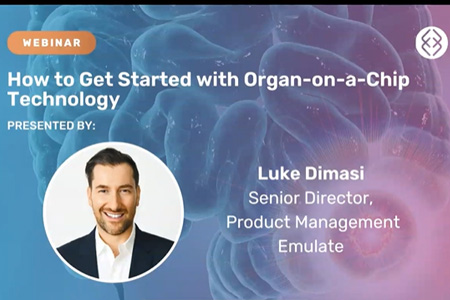For decades, scientists have utilized traditional 2D cell culture to study human biology and make remarkable strides in the field. However, as time has progressed, it has become increasingly evident that the synthetic nature of 2D cell culture, which involves the use of cancerous cell lines, static microenvironments, and limited cellular complexity, restricts its ability to accurately model human diseases and predict human responses to drug candidates.
To overcome these limitations, a revolutionary technology called Organ-Chips has emerged as a cutting-edge solution for disease research and drug discovery and development. These advanced in vitro models offer a more authentic representation of human responses compared to traditional 2D cell culture by replicating the microenvironment that cells experience within the human body.
In a recent webinar led by Luke Dimasi, Senior Director of Product Management at Emulate, an in-depth examination of their Organ-on-a-Chip technology was presented. The webinar highlighted the advantages of Organ-Chips over 2D cell culture and provided data-driven examples demonstrating their enhanced physiological relevance.
Emulate’s Organ-on-a-Chip technology represents a significant leap forward in disease research and drug discovery by providing researchers with a more realistic platform for studying human biology. By replicating the complex interactions between cells and their environment within the body, these chips offer valuable insights into how drugs affect human health.
The development of Organ-Chips marks a turning point in disease research and drug discovery by offering researchers with an innovative tool that can accurately model human diseases and predict how drugs will interact with the human body. As this technology continues to evolve, we can expect to see even more significant advancements in disease research and drug discovery in the future.
Overall, Emulate’s Organ-on-a-Chip technology provides an exciting new opportunity for researchers to study human biology more accurately than ever before. By offering a more authentic representation of the complex interactions between cells and their environment within the body, this technology paves the way for breakthroughs in disease research and drug discovery that could have far-reaching implications for public health.
